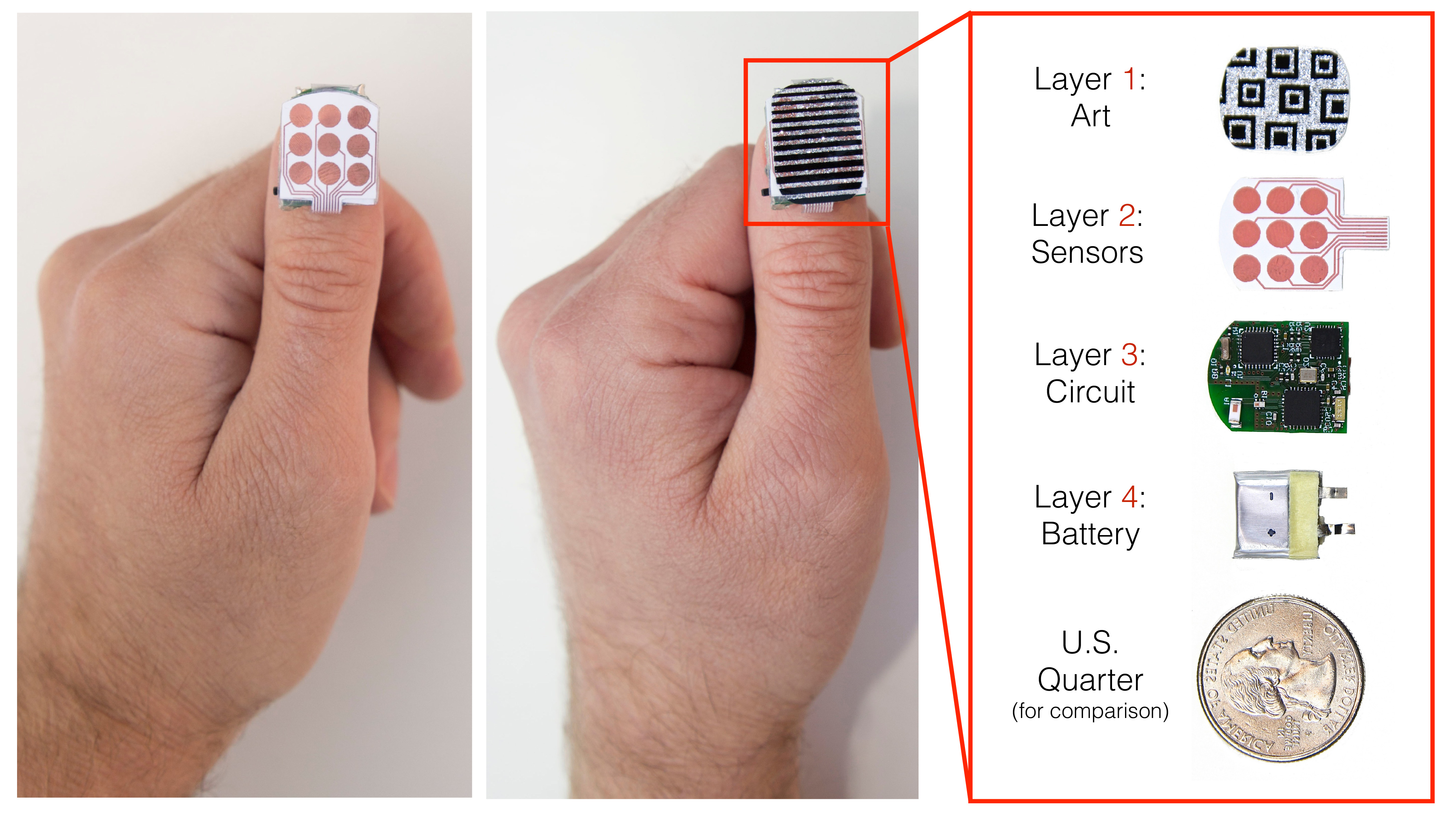MIT is transforming the human nail with a device called NailO which merges thumbnails and touchscreens.

Researchers at the MIT Media Lab have been working on a miniature wearable device that is placed onto a user’s thumbnail to transform it into a wireless track pad. The device could potentially operate digital devices or augment device interfaces.
The researchers envision that NailO could control wireless devices even when a person has his or her hands full— for example, answering the phone while cooking. It could even allow a person to switch symbol sets seamlessly while texting or enable subtle communications, like a quick text to a child while in a meeting.
 Using NailO to scroll through a recipe on a touchscreen device.
Using NailO to scroll through a recipe on a touchscreen device.
For the thumbnail device to register touch, the team employed capacitive sensing technology similar to that of an iPhone’s touchscreen since it can tolerate a thin layer between a user’s finger and the underlying sensors.

Cindy Hsin-Liu Kao and Artem Dementyev, MIT grad students on the team, found a way to include capacitive sensors, a battery, a microcontroller, a Bluetooth radio chip and a capacitive sensing chip all on one surface the size of a thumbnail.
One challenge they encountered was positioning the antenna since it has to be far enough away from the chips to avoid interference.
Initial designs used sensors created by printing copper electrodes on sheets of flexible polyester, but later incorporated off-the-shelf sheets of electrodes like those found on track pads.
MIT has been dealing with battery manufacturers in China to find a power source that could fit in the space of a thumbnail and is only 1-mm thick.
The device is unobtrusive and easily affixed onto a nail bed surface so it shouldn’t impair movements or cause any discomfort which will make it a simple device to use.
According to MIT News, “the researchers envision that a commercial version of their device would have a detachable membrane on its surface so that users could coordinate surface patterns with their outfits.”
The researchers describe NailO in a paper they’re presenting next week at the Association for Computing Machinery’s Computer-Human Interaction conference in Seoul, South Korea.
Learn more in this video by MIT’s Media Lab.
Advertisement
Learn more about Electronic Products Magazine





